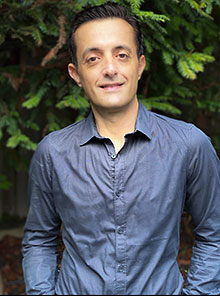Return to In-Person Supervision Required When PHE Ends
Abstract
With the end of the public health emergency (PHE), resident supervision will be required to take place with the resident and attending physician in the same room. This will apply to in-person care as well as virtual care.
APA is urging the federal government to continue allowing virtual supervision of resident trainees beyond the end of the COVID-19 Public Health Emergency (PHE) on May 11.

Elias Aboujaoude, M.D., M.A., said requiring in-person supervision is impractical and places burdens on residents and attending physicians.
In an April 13 letter to Division of Practitioner Services at the Centers for Medicare and Medicaid Services (CMS), APA joined with the American Association of Directors of Psychiatric Residency Training (ADPRT) and the American Association of Chairs of Departments of Psychiatry (AACDP) urging CMS to codify virtual supervision of residents on a permanent basis before the COVID-19 PHE expires on May 11.
As part of a broad series of measures to ensure continuity of care throughout the pandemic, the federal government allowed trainees to be supervised by attending physicians using real-time audiovisual technology. With the end of the PHE, supervision will again be required to take place with the resident and attending in the same physical space.
This will apply to in-person care as well as virtual care—the trainee and attending will be required to be in the same room.
“Telehealth care by residents has been demonstrated throughout the PHE to be a safe and effective strategy for maintaining, and in many cases increasing, access to care,” the three groups wrote. “The teaching physician is ultimately responsible for the clinical outcomes of the care provided by residents. … Continuing virtual supervision for patients and residents after the end of the PHE ensures patients maintain access to effective care.”
The letter urged CMS to consider that 55% of U.S. counties have no psychiatrists, and 130 million people live in areas with a shortage of mental health professionals. The ability to supervise residents virtually is especially critical when the resident and the patient are both in rural areas.
The three organizations stated that teaching physicians have reported that care delivered by residents through telehealth is best supervised virtually and cited one APA member who said of a situation where the patient is remote, “The supervisor can see and hear the patient better and the patient can see and hear both the supervisor and the trainee better than if they are in the same room clustered around a single computer camera.”
In a March 20 letter to CMS, APA CEO and Medical Director Saul Levin, M.D., M.P.A., noted that virtual supervision allows physicians to supervise clinical staff across multiple campuses, which increases patients’ access to care.
“APA recommends that the ability for residents to deliver telehealth services under virtual supervision be applied permanently,” Levin wrote. “At a minimum, APA urges CMS to extend the end date for this reversion to the end of 2024 … and/or to extend virtual supervision capabilities to residents in metropolitan statistical areas when their patients are in rural areas.”
Educators who communicated with Psychiatric News said that the end of virtual supervision is impractical and imposes logistical burdens on teachers and trainees. “We are facing a surreal moment in which resident and supervisor are required to be in one office but connecting with a patient who, for the most part, very much wants to stay remote,” said Elias Aboujaoude, M.D., M.A., a professor of clinical psychiatry and chief of the Anxiety Disorders Section at Stanford University School of Medicine, in an email to Psychiatric News.
He has supervised residents virtually and published several articles on remote treatment modalities and pointed out that requiring in-person supervision is “likely to disproportionately impact trainees and supervisors with lesser means.”
Aboujaoude also wondered how a return to in-person supervision would impact the growth and development of telehealth. “Will training programs and hospitals continue to want to invest in growing their telehealth and digital capabilities knowing that, in parallel, they also have to invest in expensive office infrastructure, building maintenance, and upkeep? Instead, one entirely possible outcome of this decision may be to eventually force patients back to the office, giving away the very promising gains that remote care has enabled, including when it comes to increasing access to much needed care.”
APA Secretary Sandra DeJong, M.D., senior consultant to the child and adolescent psychiatry training program at Cambridge Health Alliance (CHA), said the supervision requirement doesn’t distinguish between settings and years in training.
“In general, in training, we emphasize direct (face-to-face) supervision in acute care services and move from direct supervision to indirect supervision (remote and even retrospective) as a resident acquires experience and skills over their residency,” she wrote in an email to Psychiatric News. “For example, a PGY-1 in the emergency room would get direct supervision, whereas a PGY-3 doing psychotherapy might get supervision after the patient encounter via videoconferencing using notes and video clips from the session. In addition, some trainees may be fully licensed while others are still on a temporary license.”
DeJong was director of child and adolescent training at CHA from 2004-2018.
“Because there is no distinction for these kinds of issues, the burden on trainees and supervisors facing the burgeoning mental health demand will be much greater than it needs to be, and nonrural settings will face significant challenges in providing supervision.” ■



